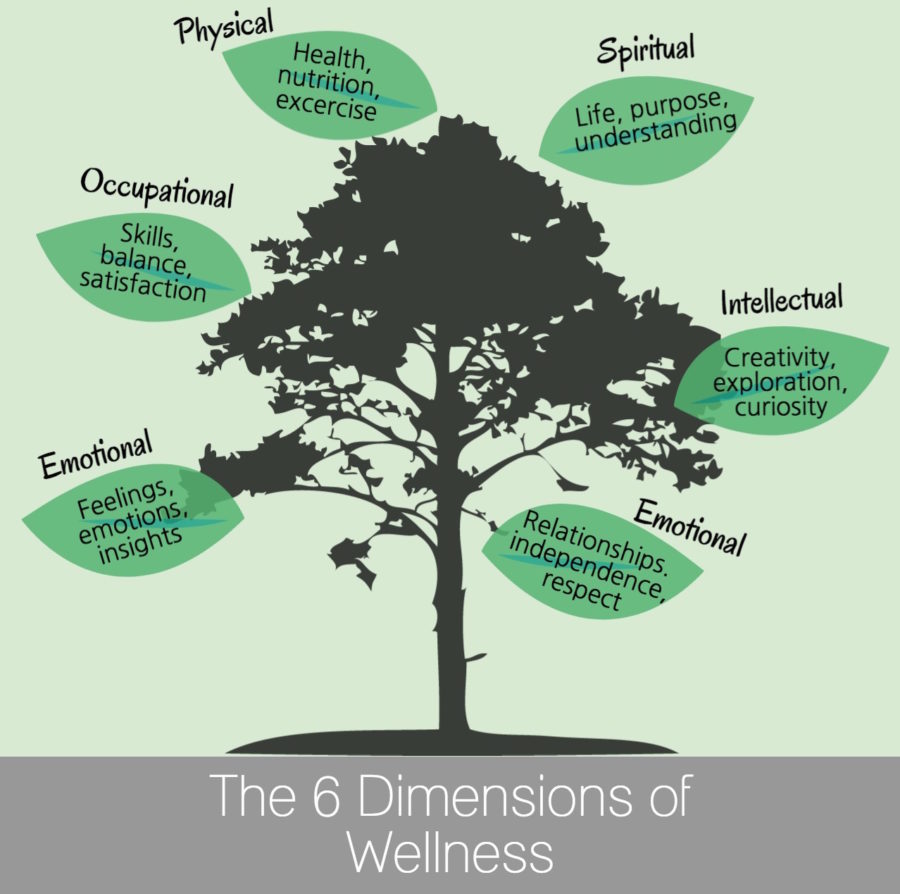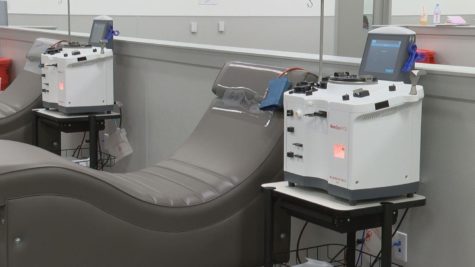Six dimensions of wellness
Richard Martinez/Iowa State Daily
Infographic: The six dimensions of wellness
October 24, 2014
Jack London, a late American journalist, once said that “the proper function of a man is to live – not exist.” Too often, college students go through life on autopilot, which is most comfortable when thinking about the stress it takes to balance their health and the six dimensions of wellness.
The terms “health” and “wellness” typically get confused with having the same meaning. Even though you cannot have one without the other, health is a broader spectrum that actually encompasses wellness and both are meant to be used in conjunction with one another.
“At some capacity, each of the dimensions of wellness have a role that can add different things to our lives,” explained Tyanez Jones, professor in kinesiology and HS 110 instructor.
The six dimensions of wellness model was developed by Dr. Bill Hettler, co-founder of the National Wellness Institute, in 1976 and is commonly used to define all that wellness encompasses. In addition to the well-known physical dimension, Hettler’s model includes emotional, spiritual, occupational, social and intellectual wellness that are all interconnected.
Jones explained that Hettler’s goal was not necessarily for people to excel at one or two dimensions, but to continue learning how to improve each area in order to lead a healthier and happier life.
“I definitely think my physical health affects my emotional and spiritual health,” said Celeste Southall, junior in elementary education. “It’s so weird to think about, but [every dimension] plays such a huge role.”
By improving one dimension, other dimensions will be improved as well.
“If I’m having a really hard time loving other people in the spiritual component, I need to dig deep into who I am and why I feel that way.” Jones encouraged. “Knowing where this challenge comes from and its foundation is going to best teach you how to improve it.”
Jones also mentioned how this can also be helpful in the physical dimension, for example, around New Year’s resolution time.
“Often times people just say, ‘I’m going to start exercising,’” Jones acknowledged. “But you need to go back to the basics. What in the past kept you from exercising? Was it because you didn’t enjoy it? Is it because you’ve never been very athletic? Figure it out in yourself, and from there you can adapt.”
Jones encouraged all students to take an interest in their health and well-being.
“[For example] Money is not going to be the thing that is the basis of happiness or joy,” Jones said. “It’s about finding a balance to help us improve ourselves and live a more enjoyable life. To be able to think and move and share things with each other – that makes you value your own life more.”
“I’d say a definite challenge of mine is being in the moment and taking time to look back on the week to evaluate areas I am lacking,” said Katie Johnson, sophomore in kinesiology and pitcher for the ISU softball team.
Johnson talked about the difficulty of “being in the now” when having to focus and worry about the future. She noted that the autopilot method only works until the realization that it’s been a whole semester without remembering anything or the feeling of not having accomplished much.
Therefore, being aware of the six dimensions of wellness and focusing on areas that need approval can be beneficial when trying to improve overall health and well-being.

















